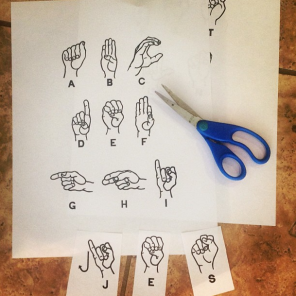A natural voice is a valuable asset when you speak in public. The sincerity, warmth and expression you convey through your voice underlie the persuasive power of your words. On the other hand, should you try to enhance your speaking voice by pitching it lower or higher than normal, it conveys a noticeable nervousness or falseness that detracts from your words.
Most people have no formal voice training, a discipline usually reserved for singers, actors or politicians. When some men speak, they tend to use a lower voice than their normal range because they believe it makes them sound more authoritative. Some women tend to speak at a higher pitch in the belief that they sound more feminine. Both of these practices often result in making their language harder to understand. People have other habits that detract from their voices too, such as speaking with a nasal tone or with an unnatural breathiness.

When you think about the people who have the most influence in society, consider their voices. Revered political figures such as Nelson Mandela, entertainment icons like Meryl Streep, and outspoken leaders such as Martin Luther King, Jr. underscore their words with an innate power summoned from deep within themselves.
Similarly, using a false voice has a negative affect on what you are saying. With dedication and focus, you can rediscover and strengthen your natural voice using some simple daily exercises.
In his book “Change Your Voice, Change Your Life,” expert vocal coach Dr. Morton Cooper asserts that the voices most people use are not at all natural. Some people, consciously or unconsciously, imitate the voice of a person they admire. Others develop false voices in reaction to people they dislike. For example, if that person has a weak voice, you may develop a strong, abrasive voice that is as different as possible.
Tip One: Mmm-hmmm
According to Dr. Cooper, the first step in rediscovering your natural voice is the “mmm-hmmm” exercise:
1. With lips closed, respond to the statement below with a spontaneous and sincere “mmm-hmmm.”
“Recess is my favorite part of the school day.”
2. Check to see whether you feel vibration in the mask area of your face as you respond. The mask area includes your lips, the bony ridge of your nose and the sides of your nose. If you feel your mask vibrating as you say “mmm-hmmm,” then you are projecting your voice naturally rather than speaking through your nose or straining your throat. Directing sound through the mask opens up your voice to its natural range and power.
3. Now, practice counting with alternating “mmm-hmmms”: one, mmm-hmmm; two, mmm-hmmm; three, mmm-hmmm; and so on. Note how the natural tone and pitch of your voice sounds, and use that as a guideline each time you speak.
Tip Two: Enrich Your Voice with Diaphragm Power
Just because you have been breathing your entire life doesn’t mean you are doing it correctly. If you watch a baby asleep in her crib, you will notice that she naturally breathes with her diaphragm, her chest and shoulders relaxed. Due to social training that teaches you to hold in your stomach and stand up straight, you tend to relearn breathing at an early age, relying on your chest muscles rather than filling your diaphragm with air.

To optimize the power of your natural voice, you should focus on breathing from your diaphragm. Located between your chest and stomach cavities, the diaphragm is a dome-shaped muscle that helps move air from your lungs upward, adding resonance and power to your voice.
1. Find out how you normally breathe by taking a deep breath while standing. If this action makes your chest puff out and your shoulders rise, you are breathing shallowly from your chest rather than deeper down. Your voice may be breathy or weak as a result, and you probably experience throat strain when raising your voice.
2. Now, take a deep breath without moving your shoulders, routing the air deep down into your belly. If your stomach/abdomen expands and contracts with your breath, you are breathing the correct way — from your diaphragm.
3. Compare speaking while breathing from your chest and then breathing from the diaphragm. As you push air through your mask, your voice becomes louder and more robust with diaphragm breathing. You can now speak as loudly as possible without straining your throat in the least. Your newly resonant voice has depth, warmth, sincerity and persuasive power.
By practicing these two quick, easy methods for optimizing your voice, you can improve your public speaking technique daily. When you combine all of tools in your rhetorical arsenal with the power of a natural, resonant voice, your ability to positively influence others will become stronger than ever before.






Comments are closed.